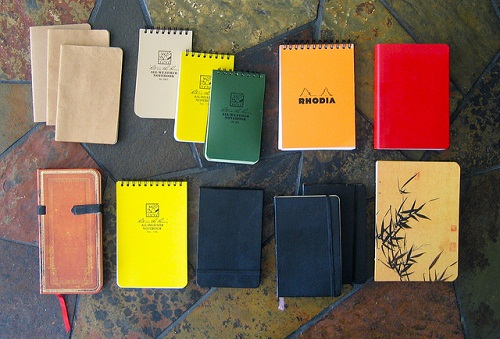Timoney Group’s “Hot” List for 2016
by Brian Timoney
We here at Timoney Group headquarters in Denver aren’t above a SEO-pandering listicle–we’ve done it before–and you clicked, so we’re all good. If you follow tech closely, much of what follows won’t be “new” per se, but the context here is things/trends that could deliver real value to our clients in ways they may not have considered.
Jupyter Notebooks
Code, data, and visualizations–all in one place.
Stop right there. If you’re like me, keeping stuff organized is a PITA difficult and time consuming. If you’re working with clients iteratively, or passing stuff back and forth with a collaborator, the Dropbox tango becomes bloated and fraught. Everything in one place, runs in a browser, supports multiple programming languages–that’s the beginning of what the Jupyter project brings to the table.
The bigger picture is that while our roots are in Geospatial, much of what we do can comfortably fit under the ever-growing umbrella of Data Science. And the notebook is the format of exchange, whether the underlying code be in Python, R, whatever. While its roots are in academia (originally as the IPython project), it has heavyweight support from IBM, Microsoft, Google, GitHub, et al: that’s good enough for us and our customers.
AWS Lambda
For most of us, using the Cloud has meant just having a server or cheap disk space Somewhere Else, with performance monitoring and management limited to determining whether the monthly bill from Amazon “looks right”.
The Lambda offering is what we really want from the Cloud: purely on-demand, with provisioning and scaling being Not My Problem. And dirt-cheap. Since a lot of the value we deliver is essentially along the lines of “Where is x?” or “What’s close to here?”, it lends itself well to building out small, manageable location services that don’t need a server being “on” 24-7. For those of us who didn’t get into tech to be Systems Administrators, dispatches from the land of the Server-less Startup make for giddy reading.
Matt Perry has a nice write-up of using Lambda to create a simple raster-to-vector geospatial conversion: it should get your gears turning.
APIs of APIs
If eleven years of consulting has taught me anything, it’s that small- and medium-sized businesses vastly underestimate the amount of Technical Debt they are accruing with their internal, custom-coded applications. If you’re a Project Manager, the question of “how we can build this?” should really be “how can we build this with the absolute minimal amount of custom code?” With the mainstreaming of SaaS (e.g. Salesforce), we’re preaching the gospel of linking these services’ APIs together using platforms such as Zapier. For many, being able to send text alerts to workers in the field based on changes in a Google Spreadsheet made back at the main office is indistinguishable from magic.
We have white-boarded for 2016 a very lightweight asset tracking system that will link together a phone’s location, its camera as a QR code reader, a Google spreadsheet as the “back-end” database, a live map hooked to the Google Sheets, and SMS messaging based on geographic triggering with the goal of less than 100 lines of custom code. Wish us luck!
Dead Simple Mobile Apps
Have you heard about the importance of Mobile? Me too. More than once. But I’m not talking about the iPhone, or Android, or even PhoneGap. I’m talking a text.
Like, works on a flip phone.
Given my background, when someone asks me a data question I naturally want to answer with a map. And in recent years that meant an online, interactive map. Yes, we love Bootleaf because it’s the easiest way to get our interactive maps to work on a variety of devices. But to often they’re messing with something that’s too interactive as they pinch their screen in vain searching for that ONE data point that actually matters to them.
Well, let’s use the power of computers to figure out what that ONE data point is and serve it up to them in the most user-friendly format of all: a simple SMS text.
* * * * * * *
One could summarize the marching orders for 2016 as being “instead of trying to impress other techies, let’s simplify, and then simplify some more until a paying client looks us in the eye and says we’ve gone too far.”
Brian Timoney is an information consultant in Denver, Colorado.
cell phone photo courtesy of Ken Banks’ Flickr stream



